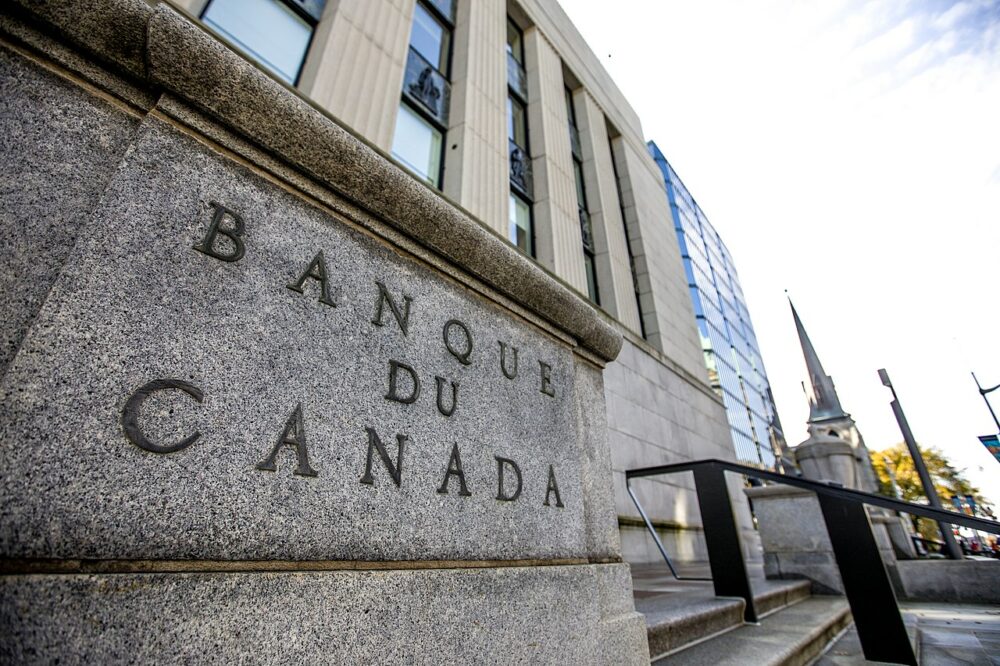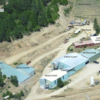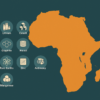Canada is heading into a mild recession as elevated borrowing costs, a downturn in the United States and persistent inflation produce economic uncertainty, according to a report from Deloitte Canada released on Tuesday.
The report the research consultancy measures the effects of inflation on household and business spending trends, and gross domestic product by province. It also predicts that both the Federal Reserve in the U.S. and the Bank of Canada will move to cut interest rates by the end of the year.
Inflation was at 5.9 per cent in January, which represents a fall from 6.3 per cent in December 2022 and the lowest growth since March of last year.
“Inflation is lower than it has been in the past year. Supply chains are no longer applying pressure on prices, which has levelled inflation for goods and services,” said David-Alexandre Brassard, the chief economist for Chartered Professional Accountants of Canada, in an interview with Mugglehead.
“That leaves a labour crunch as the remaining culprit impacting overall supply. Inflation for food prices remains very high and shows little signs of slowing down.”
Supply chain disruptions are no longer the prominent cause for inflation, and price pressures for international supply chains have eased. Inflation for goods actually stands at its lower value since July 2021, and was on part with service inflation at 5.3 per cent for February 2023. Brassard blames the supply chain issues on a labour crunch.
The pandemic produced lockdowns, which produced supply chain constraints. People couldn’t transport needed goods and there were programs allowing for the population to consume almost as much as before the lockdowns started, even though the supply side of production was impaired.
Read more: Nikola Corporation lays out its hydrogen production plans ahead of Biden’s Inflation Reduction Act
Reduced production capacity due to our aging population
The data suggests that supply chain disruptions are easing down. Overseas shipping costs have depleted and there aren’t the same variety of delays as there were during the pandemic. The main impairment to production capacity in Canada, according to Brassard, is our labour due to our aging population.
“Overall, structurally, we don’t have as many workers as we probably need. Although in the short term, this might go sideways since the economy is falling down, and we’re seeing layoffs in certain sectors,” said Brassard.
Canada’s population growth rate declined in the latter half of the 20th century. This fact coupled with the increases in average life expectancy during this period have meant Canada’s adult working age populace is reducing while the proportion of retirement age individuals is increasing.
A recent study performed by the Fraser Institute analyzed the data surrounding population aging in Canada.
In 2010, 14.1 per cent of Canada’s population was age 65 or older. This number has increased to 19.0 per cent in 2022. Statistics Canada forecasts this trend will continue, reaching 22.5 per cent in 2030.
As a result the number of working-age Canadians (15-64) for each senior (65 and up) is falling. In 1966, there were 7.7 working age Canadians for each senior. This ratio fell fallen to 3.4 in 2022. By 2027, forecasts suggest the ratio of working-age Canadians to seniors will fall to 3.0.
Conversely, the report indicates the Bank of Canada has finished raising interest rates, providing inflation continues to cool. By the end of 2023, Deloitte expects both the Bank of Canada and the Federal Reserve to cut interest rates. This process should continue throughout 2024 as rates move back toward neutral levels.
Read more: Study finds more Canadians deferring retirement due to inflation
Read more: NevGold CEO inks open letter reassuring shareholders despite recent upheavals
Consumer confidence is down
The report notes measures implemented by individual provinces to improve affordability. Ontario put in a temporary reduction of its gas tax, and Alberta rolled out its Affordability Action Plan, which calls for measures including direct payments to some households, and energy cost relief.
British Columbia also considered improving affordability a key theme, adding $4.5 billion in new spending over three years.
“While we expect to see additional spending in other jurisdictions to help offset the impacts of high inflation, we don’t anticipate a significant ramp-up in spending, given the inflationary effect it would have on an economy already struggling to meet demand,” said the report.
The Federal government will also be targeting priority areas for its spending, including enhancing affordability for lower-income Canadians, amplified transfers to provinces and territories for healthcare, and encouragement for investments that help diminish carbon emissions.
However, the report suggests individual houses and businesses may have a tougher time.
In Q4, 2022, interest payments on household debt had risen 45 per cent year over year while principal payments were down 7 per cent, reflecting that households had been reducing the share of monthly payments for principle balances to find relief for other cost-of-living priorities.
The report indicates that consumer confidence is down. The Bank of Canada’s latest survey of consumer expectations, released in January, shows a picture of Canadian households reducing their purchases of a broad range of goods and services because of high inflation and interest rates.
Read more: U.S. and Canada join forces to secure critical mineral supply chains
Read more: Gold is still the best hedge against inflation: NevGold CEO
No official timeline to get back to normal
The Bank of Canada has finished raising interest rates, providing inflation continues to cool. By the end of 2023, Deloitte expects both the Bank of Canada and the Federal Reserve to cut interest rates. This process should continue throughout 2024 as rates move back toward neutral levels.
The Bank of Canada hasn’t produced any official estimated time for the return to the inflationary baseline, according to Brassard.
“It’s the responsibility of the Bank of Canada, which is independent from the government and has the Bank of Canada given a timeline? Not really. It’s it’s very hard to predict and people have been wrong more than they’ve been right.”
Follow Joseph Morton on Twitter
joseph@mugglehead.com














